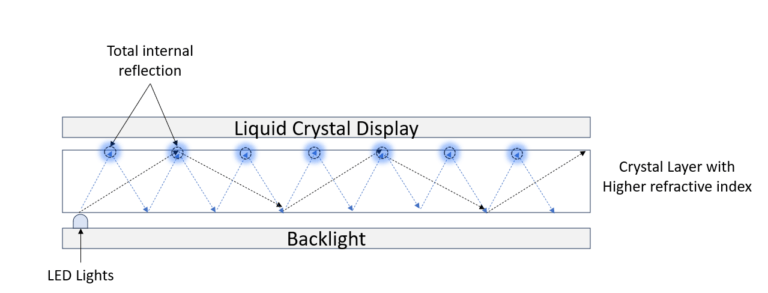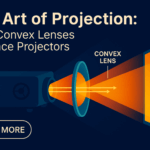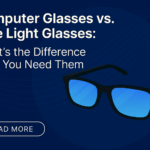Total Internal Reflection in Smartphone’s Display
The importance of total internal reflection (TIR) is paramount for modern smartphones. Amongst TIR’s contribution to smartphones, two applications stand out. These two applications are maintenance of uniform brightness of the display and transmission of information in touchscreens.
Brighter & uniform illumination of smartphone display

Total Internal Reflection is utilized in displays to improve light transmission efficiency and enhance image quality. As you can see in the above picture- A layer with a higher refractive index than the surrounding materials is placed between the liquid crystal layer and the backlight.
The light emitted by the backlight goes through repeated total internal reflections in the high refractive-index layer. This leads to greater proportion of light rays being directed towards the liquid crystal display layer. This results in brighter and more uniform illuminations of the display.
Information transfer via frustrated total internal reflection in touchscreens
The touchscreens of smart phones use principles of frustrated total internal reflection to identify the coordinates where the screen is being touched.
Frustrated Total Internal Reflection (FTIR) is an optical phenomenon that occurs when total internal reflection (TIR) is perturbed or “frustrated” by introducing an object or material near the boundary between two media with different refractive indices. This phenomenon is commonly used in various sensing and imaging applications, including touch screens, spectroscopy, and microscopy.

As you can see in the above picture- total internal reflection is hindered in the portion where we touch the display of the touchscreen. Light rays are scattered in that portion and these light rays are captured by infrared based camera imaging and accordingly interpreted by computation processes.
To get a better visualization and understanding of how TIR & refraction works, do try our Total internal reflection simulator



